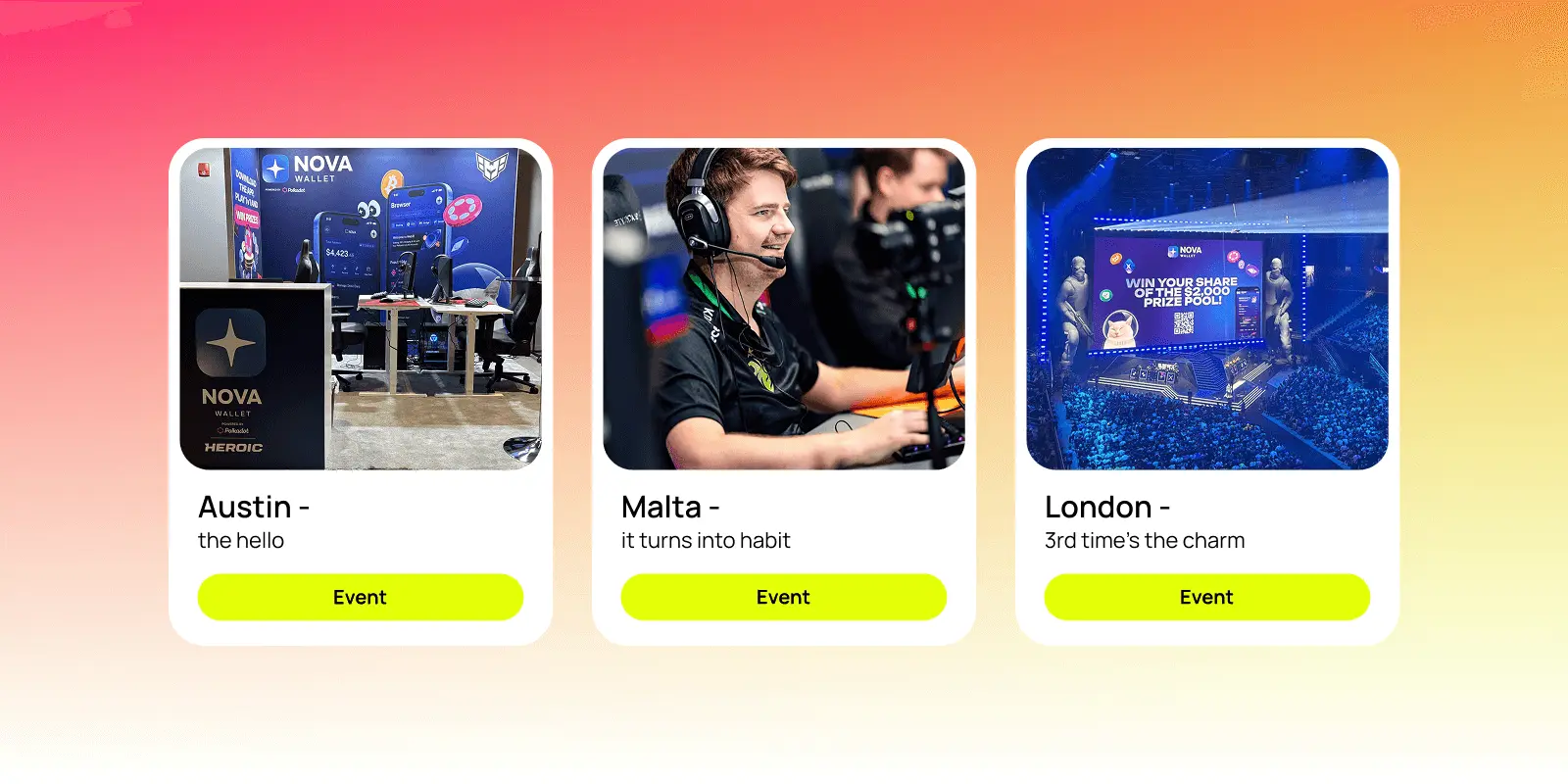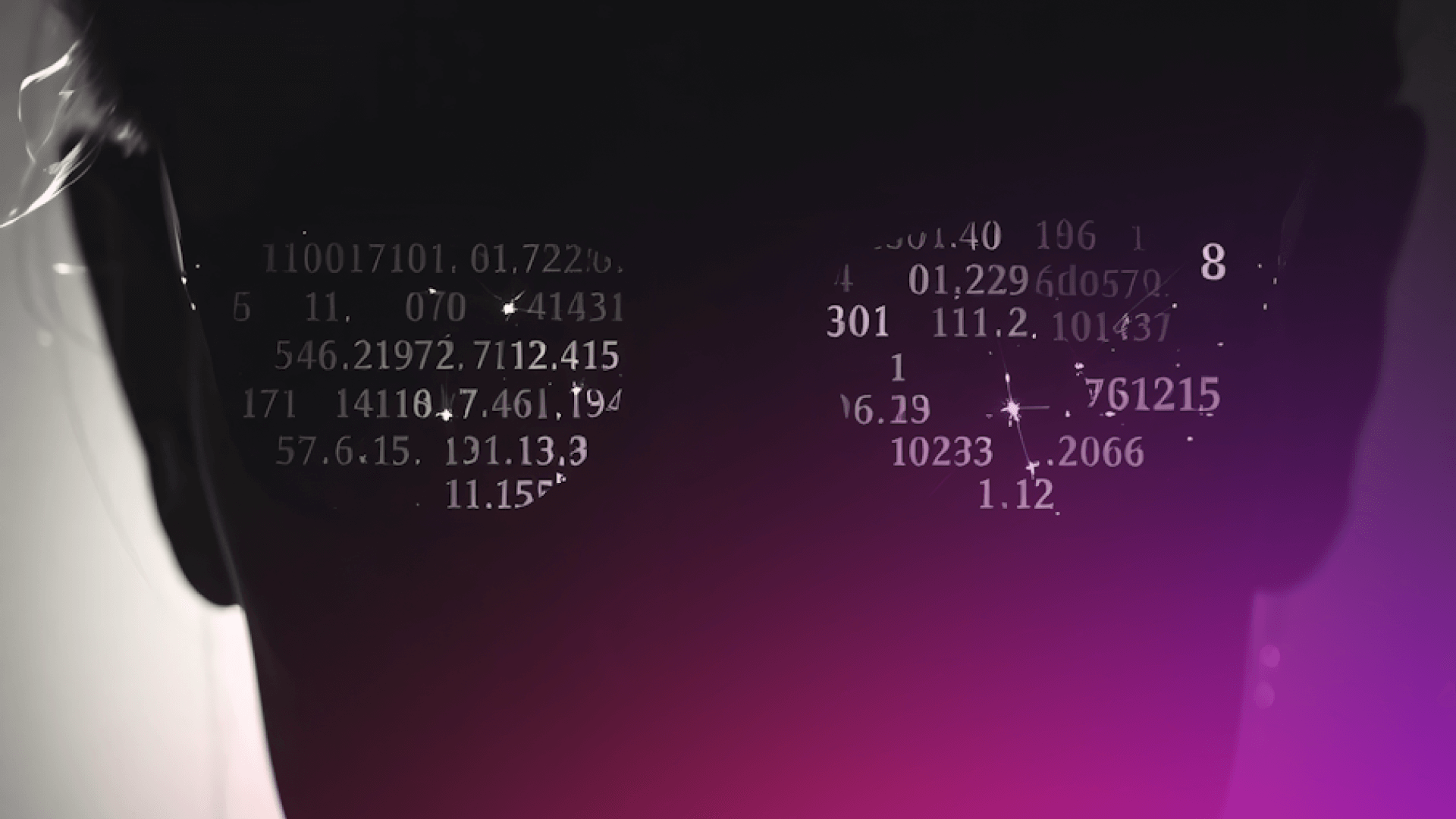Onboarding 21,000 users with Nova Shots: What we learned & how we move forward
How do you bring thousands of esports fans onchain without asking them to buy anything first? At three BLAST Counter-Strike events, Nova Wallet onboarded 21,000 new users through free interactive gameplay, processing 2.8 million transfers on Polkadot.

How do you bring thousands of esports fans onchain without asking them to buy anything first? That question drove our experiment with BLAST this season—three capitals, one idea. Austin, Malta, and London hosted Counter-Strike events where fans could open Nova Wallet, get free starter tokens, predict match momentum, and see real rewards land in a self-custodial wallet. No purchases, no signups, no abstract promises. Just play, react, and own what happens next.
Over that run, 21,000 new wallets came onchain, with more than 2.8 million transfers recorded. Those weren’t speculative users; they were fans following the match and reacting in real time. It worked because every part of the experience—from the prediction engine to the token payouts—ran smoothly on Polkadot, powered by Nova Wallet as the user gateway.
Why we built on Polkadot
We needed infrastructure that could handle thousands of micro-transactions during live matches, settle instantly, and stay cost-efficient even at scale. Interactive viewing has to feel immediate. If a team wins a clutch and the payout lags, the moment’s gone.
Polkadot’s design solved three problems at once:
- Low fees and high throughput meant we could process predictions and payouts without friction.
- Fast finality kept every in-game action synced with the broadcast, so when the match ended, the result was already confirmed on-chain.
- Composability across rollups (i.e., parachains) let us anchor our logic where it fit best—using Hydration for fast swaps and on-chain accounting, while keeping assets liquid in USDC.
And Nova Wallet became the front-end bridge,translating all that technical performance into a two-tap experience fans could actually use. No browser extensions, no seed phrases. Just a wallet that quietly did the heavy lifting.
Three stops, one season

Austin: the hello
Austin was our introduction. We didn’t pitch Web3 or wallets; we embedded a side-quest into the tournament flow. Fans tapped into Nova Shots between rounds, got starter tokens, and started predicting. Every transaction they made—minting, spending, earning—settled on Polkadot without them ever noticing the complexity underneath.
Social posts mirrored the live action, so going from watching a highlight to playing felt natural. The biggest insight from Austin: people don’t need education before action. They learn faster when the product moves with them.
Malta: habit kicks in
By Malta, behavior shifted from “what is this?” to “I’m playing again.” Fans opened Nova Wallet between maps, tracked their tokens, and compared ranks. The product loop—watch, engage, react—started to feel familiar.
Behind the scenes, our infrastructure scaled smoothly. Real-time predictions triggered bursts of onchain activity that peaked mid-match, and Hydration handled the load with consistent throughput. That stability mattered; if onchain flow stutters, the entire UX breaks.
BLAST’s own content team leaned into it, describing Nova Shots as a “prediction market for match momentum”—a framing that immediately clicked for the CS2 audience. The $25,000 USDC prize pool gave it weight, but what kept people returning was the rhythm: every action resolved onchain within seconds.
London: the testing at scale
London proved we could reach real Counter-Strike fans at scale. These weren't crypto natives hunting airdrops. They were gamers who showed up for the tournament and engaged with Nova Shots because it matched the intensity of what they were already watching. That's the win.
London brought it all together. BLAST treated the event as the city’s flagship CS2 moment — packed arena, wall-to-wall broadcast, and Nova Shots running alongside as a free, skill-based companion.
The Defiant covered the activation, highlighting what mattered: 1,000 free tokens per player, $25K prize, rewards, and a fully onchain loop that didn’t need a purchase.
From August 25 to September 7, 2.8 million transfers flowed through, with 256,000 on a single day during the quarterfinals. Finals day hit 3,433 active accounts—the highest daily number of the season.
That performance wasn’t luck. It was Polkadot’s architecture doing what it was built for: scalable, secure, low-latency execution that can sit behind a mainstream entertainment moment without breaking stride.
Why it worked
Zero purchase = zero fear.
When you remove the cost barrier, curiosity takes over. Fans didn’t hesitate to try it because there was nothing to lose.
Skill over spend.
Winning in Nova Shots had nothing to do with balance size. It rewarded game sense—the same intuition that drives esports itself. That alignment made the experience feel native, not bolted-on.
Custody without complexity.
Nova Wallet handled the cryptography under the hood, while Polkadot ensured each transfer was finalized securely. Fans owned their winnings immediately, with no waiting, no withdrawal flow, no custodial hold.
A loop that fits the broadcast.
The experience mirrored the rhythm of the match: watch → predict → see it pay off. Every reward landed as the crowd reacted. That timing is what made it feel real.
Challenges Behind the Scenes
Not everything was smooth. A few lessons for anyone building similar experiences on Polkadot:
- Latency tolerance is lower than you think. Even 2-3 seconds of lag between match data and onchain reflection breaks immersion. We had to optimize how we batched events and broadcast confirmations from Hydration.
- UX language matters more than tech. “Predict match momentum” resonated far better than “join an onchain market.” Terminology can either open the door or close it instantly.
- Analytics need context. Traditional Web3 dashboards don’t tell you what’s happening inside the event loop. We built a custom layer to track predictions per round, wallet activity spikes, and transaction velocity—all mapped against match time.
These tradeoffs are design challenges, not technical failures. Polkadot gave us the flexibility to adjust fast between stops without rewriting core logic. That’s a huge advantage for live activations.
What Builders Can Take Away
- Start with emotion, not education.People don’t read whitepapers before trying an app. Design something that feels familiar first; the learning happens inside the interaction.
- Keep ownership invisible.True self-custody doesn’t mean showing users seed phrases. It means giving them the benefits of ownership—like instant rewards—without the overhead of managing it manually.
- Design around context, not conversion.We didn’t interrupt the broadcast. We built around it. Polkadot’s performance made it viable to treat blockchain like background infrastructure instead of the main event.
- Use composability to scale naturally.Because Hydration and other Polkadot components integrate cleanly, we could expand functionality—new assets, faster swaps, different reward logic—without re-architecting the system.
Web3 onboarding isn’t about lowering entry costs; it’s about removing hesitation. Every technical choice we made—from using Polkadot for finality to issuing stablecoin rewards via Hydration and surfacing it all through Nova Wallet—was aimed at keeping curiosity alive.
What’s Next
We’re taking the same playbook to Hong Kong in November. Same premise: free entry, real rewards, on-chain from the first click. The next phase will test how this model scales across regions—and how far we can push self-custodial engagement before the word “Web3” even comes up.
The end goal isn’t just another activation. It’s proving that Polkadot + Nova Wallet can handle mainstream entertainment use cases where blockchain is invisible—but ownership is real.
About the author
Lina Lonskaya is the Marketing Manager at Nova Wallet. She leads marketing strategy and ecosystem growth initiatives for Nova Wallet, a non-custodial Polkadot wallet focused on user experience, staking, and onchain discovery.












